 by our College Data Analytics Team
by our College Data Analytics TeamRivier total enrollment is approximately 2,178 students. 868 are undergraduates and 150 are graduate students.
Male/Female Breakdown of Undergraduates
The full-time Rivier undergraduate population is made up of 78% women, and 22% men.
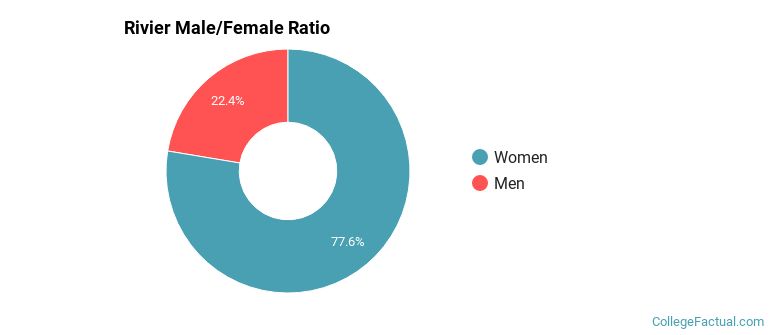
For the gender breakdown for all students, go here.
Rivier Racial/Ethnic Breakdown of Undergraduates

| Race/Ethnicity | Number |
|---|---|
| White | 663 |
| Unknown | 77 |
| Hispanic | 41 |
| Black or African American | 30 |
| Multi-Ethnic | 27 |
| Asian | 26 |
| Native Hawaiian or Pacific Islander | 2 |
| International | 0 |
See racial/ethnic breakdown for all students.
Male/Female Breakdown of Graduate Students
About 69% of full-time grad students are women, and 31% men.
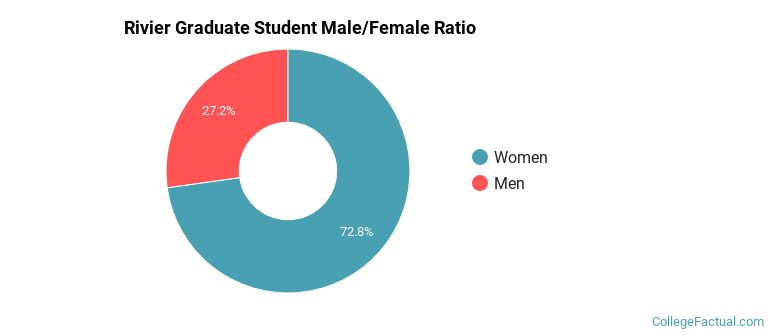
For the gender breakdown for all students, go here.
Rivier Racial-Ethnic Breakdown of Graduate Students
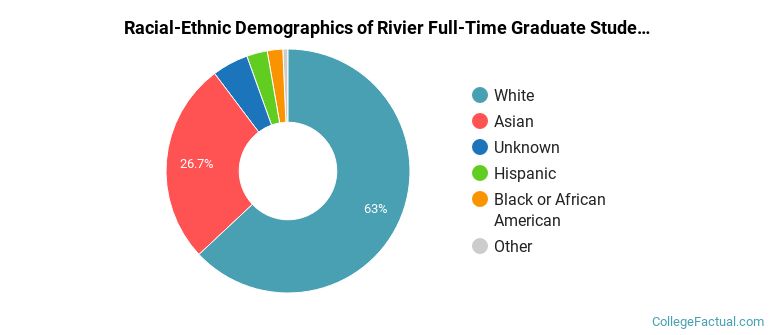
| Race/Ethnicity | Number |
|---|---|
| White | 79 |
| Asian | 51 |
| Black or African American | 7 |
| Hispanic | 6 |
| Unknown | 5 |
| Multi-Ethnic | 2 |
| Native Hawaiian or Pacific Islander | 0 |
| International | 0 |
See racial/ethnic breakdown for all students.

| Race/Ethnicity | Number |
|---|---|
| White | 1,574 |
| Unknown | 186 |
| Black or African American | 155 |
| Asian | 127 |
| Hispanic | 94 |
| Multi-Ethnic | 36 |
| Native Hawaiian or Pacific Islander | 2 |
| International | 0 |

There are approximately 1,753 female students and 425 male students at Rivier.
Rivier ranks 1,026 out of 2,183 when it comes to geographic diversity.
57.99% of Rivier students come from out of state, and 0% come from out of the country.

The undergraduate student body is split among 10 states (may include Washington D.C.). Click on the map for more detail.
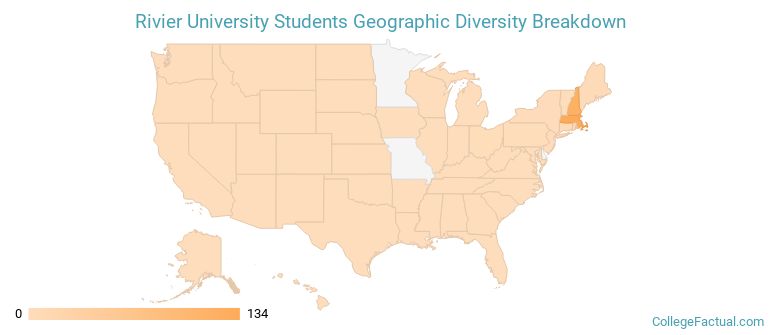
| State | Amount |
|---|---|
| Massachusetts | 134 |
| New Hampshire | 121 |
| Rhode Island | 12 |
| Connecticut | 9 |
| Maine | 5 |
A traditional college student is defined as being between the ages of 18-21. At Rivier, 31.55% of students fall into that category, compared to the national average of 60%.
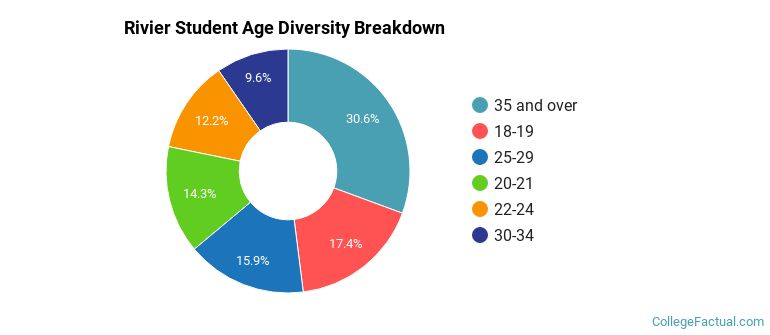
| Student Age Group | Amount |
|---|---|
| 35 and over | 742 |
| 18-19 | 421 |
| 25-29 | 386 |
| 20-21 | 346 |
| 22-24 | 295 |
| 30-34 | 233 |
| Under 18 | 0 |
Footnotes
*The racial-ethnic minorities count is calculated by taking the total number of students and subtracting white students, international students, and students whose race/ethnicity was unknown. This number is then divided by the total number of students at the school to obtain the racial-ethnic minorities percentage.
References
Department of Homeland Security Citizenship and Immigration Services
Image Credit: By RivierCollege under License
Read College Factual's Diversity Ranking Methodology.